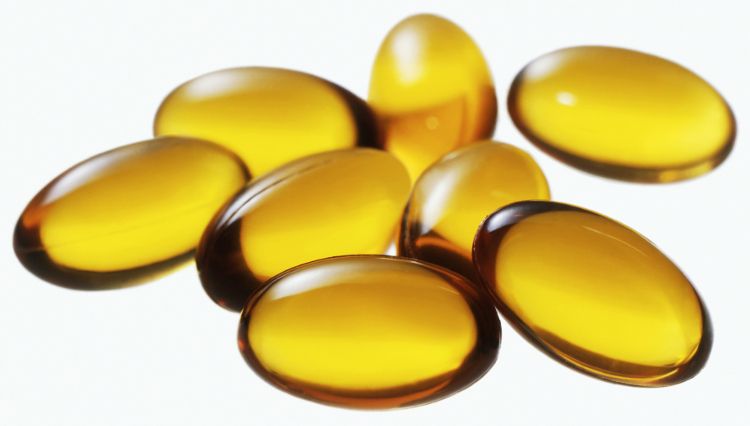Plant-based omegas and the case for Ahiflower: SupplySide West 2021 report
Nature's Crops' Greg Cumberford discusses the advantages of Ahiflower as a plant-based source for omegas, and new clinical data that is on the way.
Photo © iStockphoto.com/ evemilla

Omega-3s EPA and DHA are probably the most well-known and broadly consumed dietary supplements due to their cardiovascular benefits and the level of clinical substantiation they’ve undergone. The predominant source of omega-3s has traditionally been marine sources, but in recent years, plant-based omega-3s have made their way to the market to challenge the supremacy of their marine counterparts. One of the earliest plant-based sources was flax seed oil, rich in alpha-linolenic acid (ALA), which converts to omega-3 EPA and DHA in the body. However, the space is diversifying to now include algal sources of EPA and DHA, and ahiflower.
According to Greg Cumberford, vice president of science and regulatory at Nature’s Crop International, a leading supplier of ahiflower oil, it is “the richest, most complex and balanced omega from a plant source.” By balanced, Cumberford means that it has the rich overall omega-3, -6, and -9 content of any plant.
“[Ahiflower] has the richest omega-3 stearidonic acid (SDA) content – 20%. It also contains 45% ALA. SDA is our body’s natural metabolite from ALA. So, if you consume flax, your body, through liver function will naturally produce a certain amount of stearidonic acid, but that’s considered a rate-limiting step,” explained Cumberford. “Ahiflower being the richest stearidonic acid source plus ALA, converts through to the rest of the longer chain omegas much more efficiently. Our first human clinical trials showed that. It was a head to head comparison between ahiflower and flax. [According to the research], ahiflower converts to up to four times more efficiently through to long chain EPA than flax.”
Ahiflower is also rich in gamma-linolenic acid (GLA), says Cumberford. This is in contrast to flax, fish oil, and algal oils, which do not contain GLA. “That’s why we talk about ahiflower being the most complete and balanced [plant-based omega source], because it has both omega-3 and omega-6, and the good omega-6 is high. Ahiflower contains about the same amount of GLA as evening primrose oil. Then, it also contains omega-9 as oleic acid, which is also found in olive oil and other common vegetable oils.”
The predominant hurdle that all plant-based omega products face is the reputation that plant-sources are poorly converted into EPA and DHA, compared to fish oil. So, while ahiflower has research demonstrating its advantages over sources like flax, it still needs to contend with the fish oil’s tight grasp on the omega-3 space. Nature’s Crop is pushing back against this stereotype with new research that demonstrates ahiflower’s efficiency at converting to EPA and DHA. The research, conducted by Richard Bazinet, PhD, associate professor in the Department of Nutritional Sciences at the University of Toronto, is the subject of a new white paper, and eventually will be peer-reviewed for publication.
“[Bazinet] is a globally recognized brain lipid researcher, and he and his team have been looking at this question of ahiflower’s conversion through to DHA; EPA and DHA being the dominant fatty acids in fish oil,” said Cumberford. “The preliminary evidence in a mouse model conducted over the last year shows that ahiflower converts relatively quickly and efficiently through to DHA.”
This is an important step to raise awareness and trust in a regenerative plant-based source of omega-3s. “Ahiflower has the opportunity to help a really large segment of the natural products industry move toward sustainability – not only by reducing the impact on marine sources, but also from the standpoint of regeneratively farming omega-3s,” said Cumberford. “We feel from an industry awareness standpoint that being able to show that ahiflower contributes therapeutically [is significant], because the bottom line is that most people agree that the western diet contributes to deficiencies in omega-3s. Hence the need for rebalancing and improving omega-3 intakes. So, if ahiflower as a regenerative plant-based source can do that, and it does, then that’s a new story. Because now, it doesn’t have to be about sacrificing benefits if you go with a plant-based option.”
Survey finds a lack of enthusiasm about AI technology among food and beverage consumers
December 12th 2024The survey, commissioned by Ingredient Communications and conducted by SurveyGoo, found that 83% of respondent agreed that companies should declare on product labels when a product has been designed or manufactured with the assistance of AI technology.